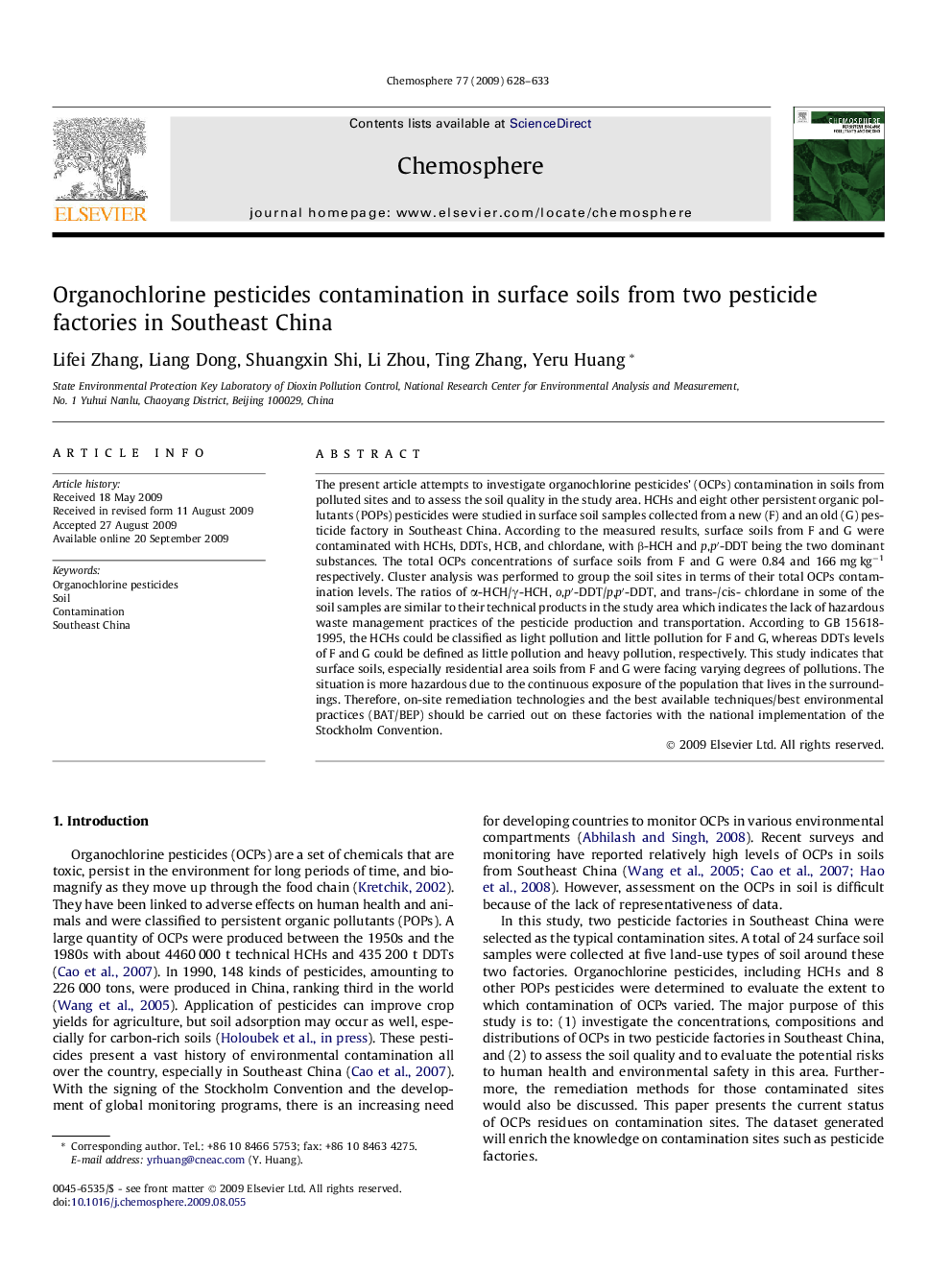| Article ID | Journal | Published Year | Pages | File Type |
|---|---|---|---|---|
| 4412093 | Chemosphere | 2009 | 6 Pages |
The present article attempts to investigate organochlorine pesticides’ (OCPs) contamination in soils from polluted sites and to assess the soil quality in the study area. HCHs and eight other persistent organic pollutants (POPs) pesticides were studied in surface soil samples collected from a new (F) and an old (G) pesticide factory in Southeast China. According to the measured results, surface soils from F and G were contaminated with HCHs, DDTs, HCB, and chlordane, with β-HCH and p,p′-DDT being the two dominant substances. The total OCPs concentrations of surface soils from F and G were 0.84 and 166 mg kg−1 respectively. Cluster analysis was performed to group the soil sites in terms of their total OCPs contamination levels. The ratios of α-HCH/γ-HCH, o,p′-DDT/p,p′-DDT, and trans-/cis- chlordane in some of the soil samples are similar to their technical products in the study area which indicates the lack of hazardous waste management practices of the pesticide production and transportation. According to GB 15618-1995, the HCHs could be classified as light pollution and little pollution for F and G, whereas DDTs levels of F and G could be defined as little pollution and heavy pollution, respectively. This study indicates that surface soils, especially residential area soils from F and G were facing varying degrees of pollutions. The situation is more hazardous due to the continuous exposure of the population that lives in the surroundings. Therefore, on-site remediation technologies and the best available techniques/best environmental practices (BAT/BEP) should be carried out on these factories with the national implementation of the Stockholm Convention.
